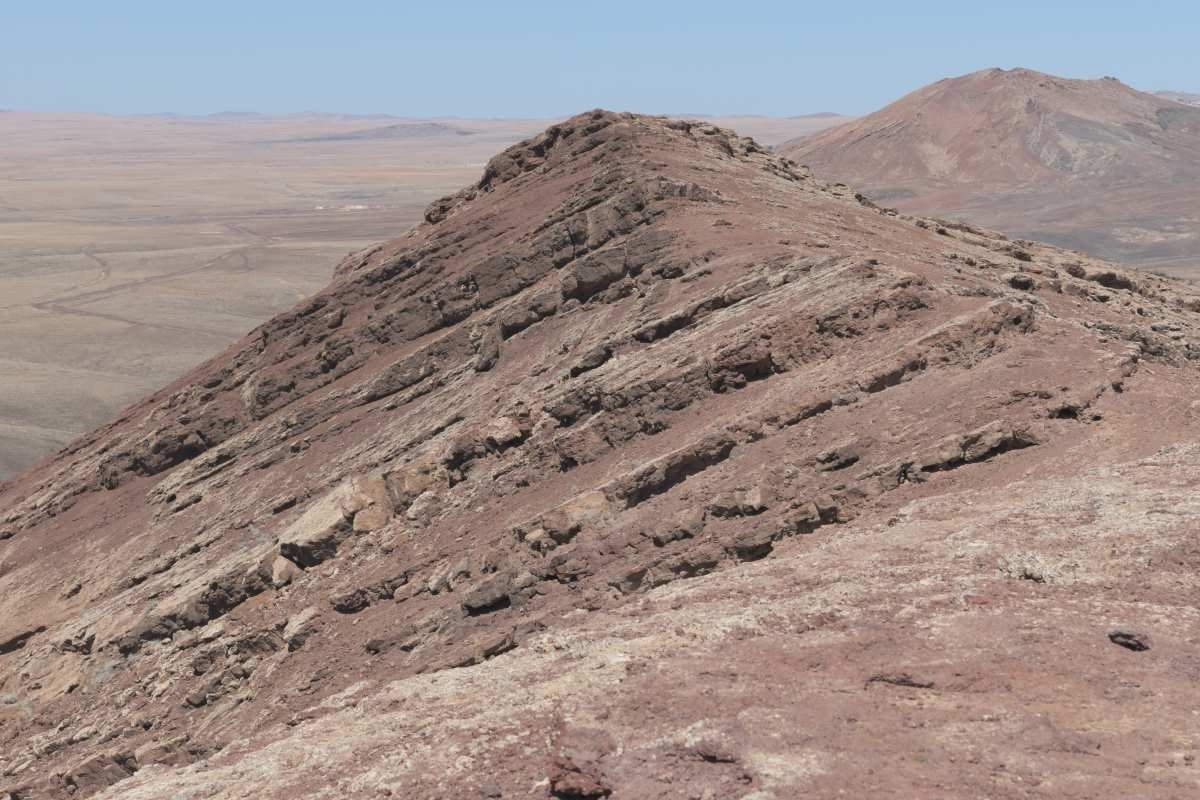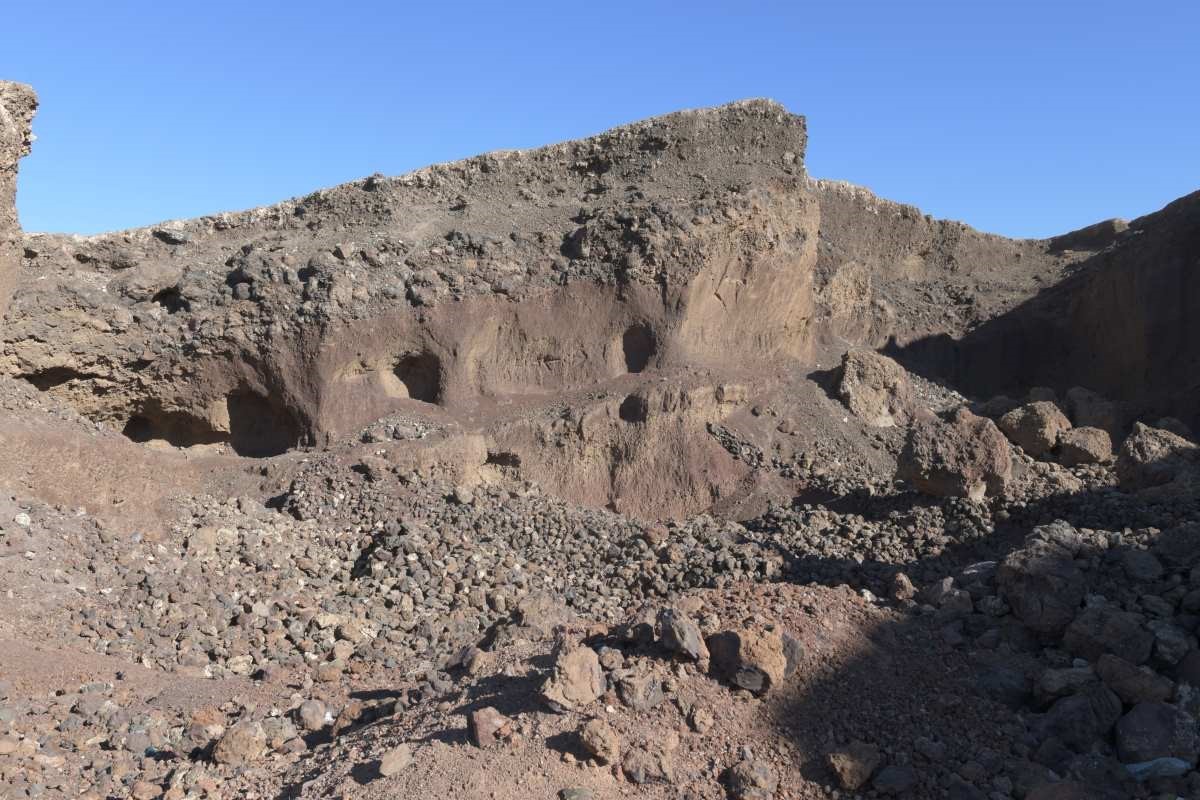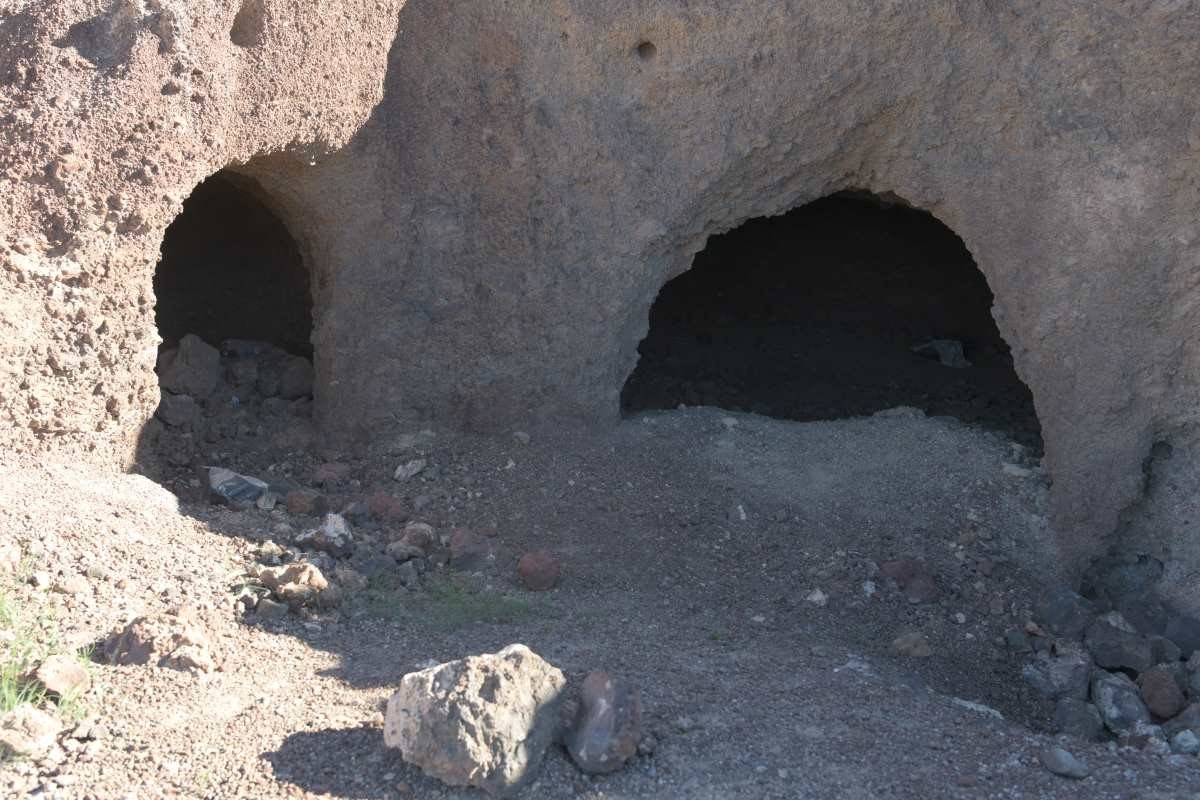Within Mafraq Governorate, south of the international road
linking Amman to Baghdad, two mountains signal the arrival of Jordan’s capital,
or bid farewell to those on their way to Anbar and the glorious capital of
Al-Rashid, Baghdad.
اضافة اعلان
Due to the scarcity of shady areas along the path
drawn out on our GPS applications, we divided our trip into two
stages: the first from the town of Al-Bishriyya to the Usra Dam in the
afternoon, pitching our tents for an overnight stay; and the second starting at
dawn, to the two mountains and back.

After parking our cars in town, we set out on a direct southward
path towards our day’s destination, Usra Dam, about nine kilometers away. We
were trekking through desert filled with rare vegetation, except for the plants
sprouting up on the edges of rainwater bodies, on a path covered with flint
pebbles and black basalt.
That first leg of our journey was easy-going. As we walked,
we welcomed the beginning of spring and the magic glow it casts upon the
desert.
Camping along the damWe arrived at the dam, its aggregate walls paved with basalt
stones, and pitched our tents at one of its corners. We had chosen a night on
which the full moon of the month of Shaban illuminated the landscape, far from
the lights and hustle and bustle of Jordan’s cities.
That first leg of our journey was easy-going. As we walked, we welcomed the beginning of spring and the magic glow it casts upon the desert.
There, we contemplated stars and planets that do no appear
clearly to the naked eye except in the canvas of the vast desert sky. The
brilliance of the celestial bodies cast a sheen on the surface of the dam’s
waters.
Some locals in a neighboring camp explained that Usra Dam
was named “waters of hardship” after the scarcity of the precious resource in
the desert. They said the dam had become a recreational destination for the
people of nearby towns, and a prime spot to watch birds on their migration
paths.

Nearby, we found some basalt rocks on which a number of
clean inscriptions had been scrawled. Next to it, a modern etching showed a
heart with the name of two lovers, to perpetuate their devotion for eternity.
Our camp was simple — a couple of one-man tents and sleeping
bags, victuals for dinner and breakfast, sufficient water for coffee and
drinking, and head lamps, which we had made sure to bring along for safety.
As soon as the first light of dawn came, we packed our
luggage neatly so we could carry it taut on our shoulders, and set out towards
the east in the direction of the Aritayn mountains, called “the lungs” in a
local dialect due to the resemblance they bear to human lungs when viewed from
above. They were first given the name by a British pilot who flew mail between
Jordan and Iraq during the mandate.
According to the maps on our navigation devices, which offer
coordinates with accurate height and distance measurements, the safest way to climb
the peaks was from the southern side. The ascent required cautious foot
placement due to the fragile clay tuff that crumbled under our steps and
threatened slipping. To avoid this, we wore wide-soled shoes and used climbing
sticks, carefully following the instructions of the trail leader who had once
preceded us to ensure that we were taking a secure path. From base to peak, we
gained about 200 meters of elevation, and found the difficulty level moderate.
Twin peaksAs soon as we reached the first summit, we took in a
majestic scene blanketed in stillness. On the horizon were troughs, bodies of
water separating us from Jabal Fahim and Jabal Hannoun, and to the north we
spotted Jabal Qa’is and Jabal Maqa’is near the historical town of Umm Al-Quttayn
and the famous Tal Ramah, rich in ore and zeolite formed as a result of
volcanic activity. These minerals are of great agricultural importance, used to
treat the soil and enhance its ability to release nitrogen and retain excess
water, to reduce the irrigation needed especially for field crops.
There, we contemplated stars and planets that do no appear clearly to the naked eye except in the canvas of the vast desert sky. The brilliance of the celestial bodies cast a sheen on the surface of the dam’s waters.
The finest wheat grows in that area and serves as a rich
source of particle minerals. That wheat is also used in industrial ponds for
fish farming.
The scene beckoned us to stay and drink a cup of coffee from
atop the volcano, which had become inactive at least a million years ago. A
Japanese scientist called Aramaki had requested to include the site on UNESCO’s
World Heritage List as a piece of natural heritage.

We continued on our way to the sister summit, walking the
blade-like edge of the mountain along zigzags in between the two peaks. We
crossed a natural separator dividing the duo, from which we could either
descend or shorten the distance to our next target. We carried on.
The second summit was no less spectacular than her sister,
but rather, rose above by more than forty meters. We chose careful footings as
we descended towards the vicinity of Al-Shifa, an abandoned quarry once used
for the extraction of clay ore.
In the belly of the volcanoThe strangeness of the place invited us to explore, as the
area allows you to enter the belly of the volcano, where gas bubbles have left
cavities and crevices with multiple entrances and chambers that appeared after excavation,
offering research opportunities for students of earth and mineral sciences.
We lingered there for a while, cautiously contemplating the dialogue of the sun, light, and shadows between the folds of the ancient volcano.
Its appeal, however, is universal, for as soon as we
published the pictures on social media, we received many calls from film producers
asking for guided trips, enchanted by the site’s strangeness and uniqueness,
and its potential as a location for filming, cinematic production, and
documentary work.

We lingered there for a while, cautiously contemplating the
dialogue of the sun, light, and shadows between the folds of the ancient
volcano.
Then, we concluded our tour of this beautiful area, heading
back towards our starting point, which we eventually reached to complete our
23-km trek.
Read more Where to Go
Jordan News



